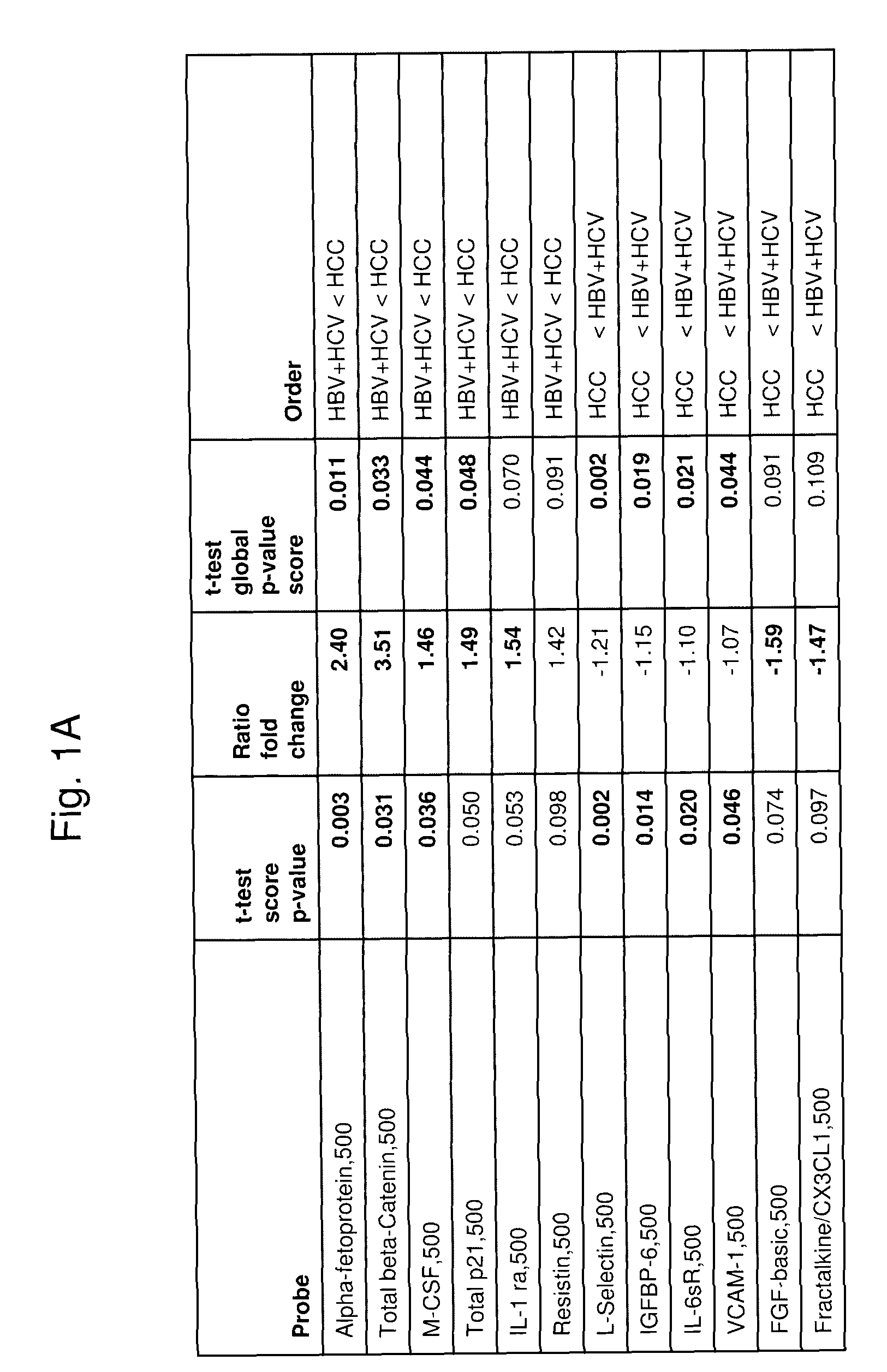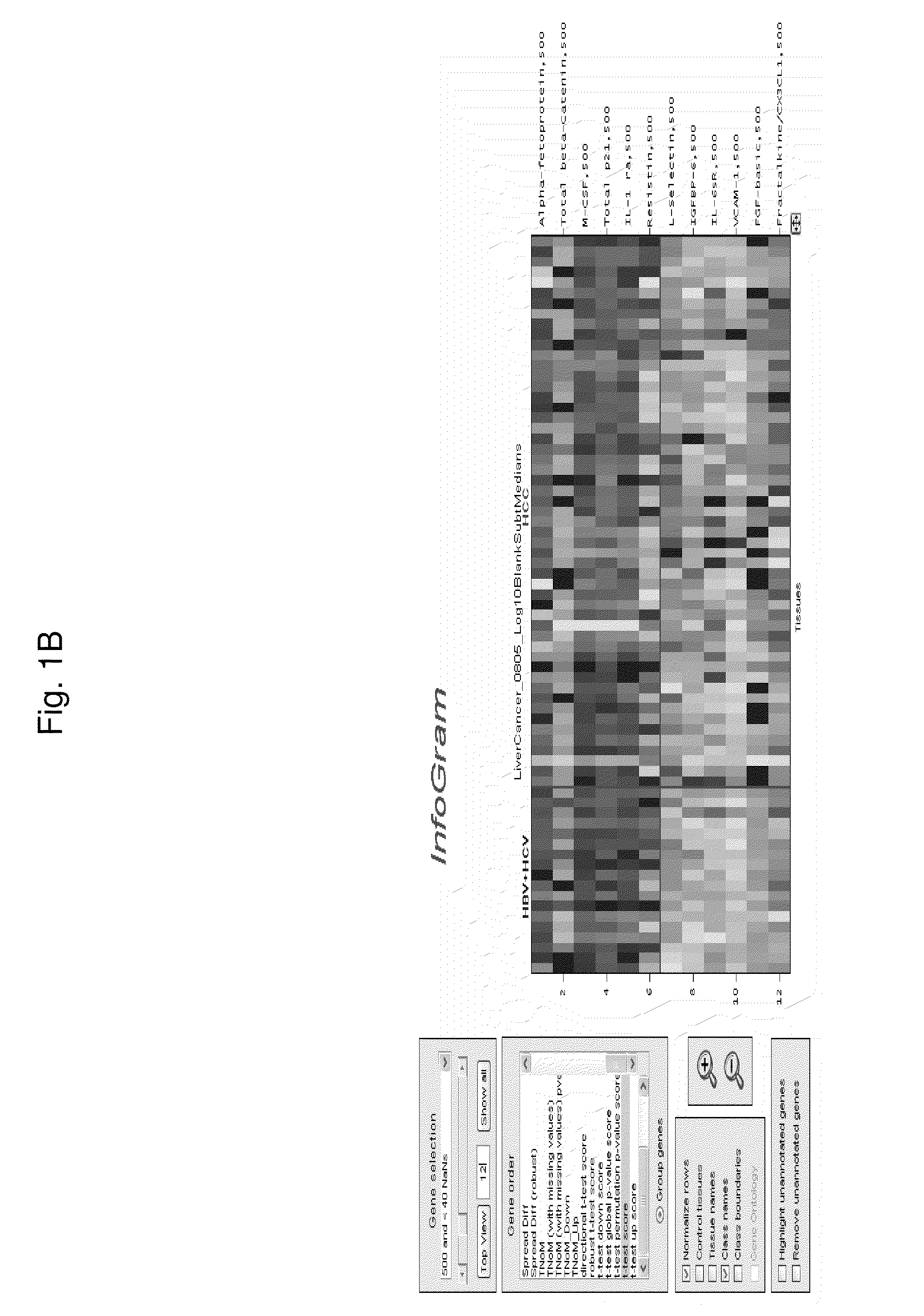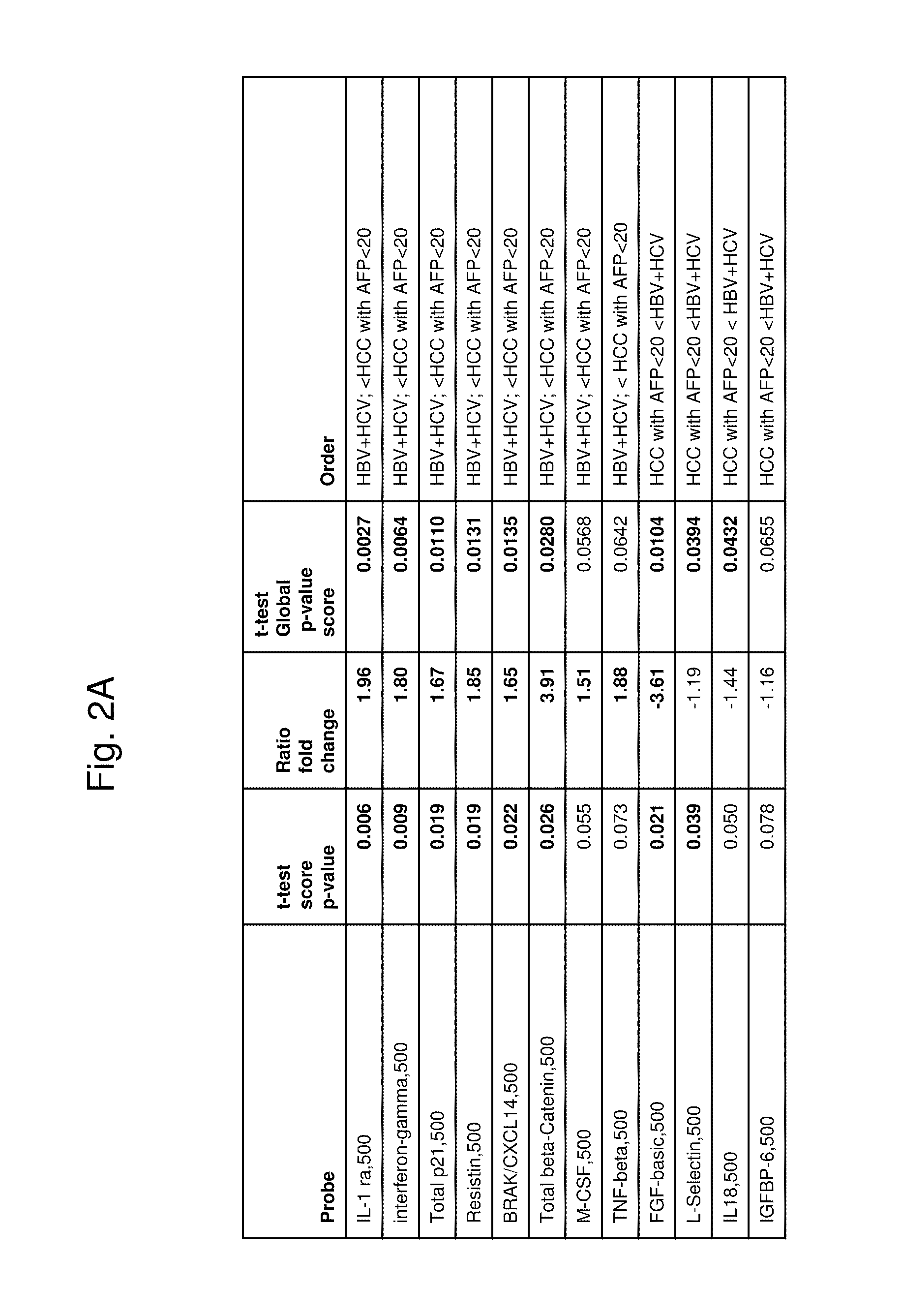Methods for detecting hepatocellular carcinoma
a hepatocellular carcinoma and detection method technology, applied in the field of hepatocellular carcinoma detection and diagnosis, can solve the problems of poor prognosis, increased risk of hcc, ineffective treatment, etc., and achieve the effect of improving sensitivity and accurate detection of h
- Summary
- Abstract
- Description
- Claims
- Application Information
AI Technical Summary
Benefits of technology
Problems solved by technology
Method used
Image
Examples
example 1
General Protocol for Array Processing
[0138]The antibody array was manufactured using Agilent Technologies, Inc. in-house thermal ink-jet deposition system. Eight identical arrays were on 1×3 inch slide. The surface of antibody arrays was blocked with 6-12% non-fat milk for 10 minutes at room temperature in a staining dish (Aldrich Z10, 396-9) under constant shaking. The slide was washed twice with 10 mM phosphate saline buffer (pH 7.4) containing 0.05% Tween 20 for about 3-5 minutes, then washed once with 10 mM phosphate buffer (pH 7.4) for 3 minutes before briefly rinsing with de-ionized water. The slide was then spun dry by centrifuge at 1500 rpm (Beckman GPKR).
[0139]The plasma samples from patients and healthy controls were diluted 1:3 in 1% casein block (Pierce 37528) containing 0.6% Triton X-100. 40 uL of the above solution was applied onto 8-pack gasket slide (Agilent G2534-60007) and the slide was assembled using Agilent Surehyb gasket chamber (Agilent G2534A). Each sample wa...
example 2
Detection of Subjects Having Hepatocellular Carcinoma
[0151]Antibody Array Composition
[0152]Antibodies against the following target antigens are printed at 500 ug / ml and 250 ug / ml. About 60 antibodies were tested. Each antibody is printed 4 replicates per array and per condition.
[0153]Sample Selection
[0154]The plasma samples were obtained from the Asian Liver Center at Stanford Medical School. Plasma samples from 54 HCC patients, 18 patients with hepatitis or cirrhosis, and 17 normal control subjects were collected for analysis.
[0155]Sample Processing
[0156]All plasma samples are processed by the protocol as described in Example 1. Each sample is processed twice on different slides. The samples are arranged in a way that each slide contains samples from different categories. The array measurements were highly reproducible; median values from duplicate arrays typically had an r2 value=0.99, while median values from different samples typically resulted in r2 values of 0.96 or less.
[0157...
example 3
Evaluation of M-CSF as Standalone or Complementary Protein Marker to AFP in HCC Patients in Comparison to Patients with Chronic HBV Infection or Metastatic Liver Cancer
[0166]Study Outline
[0167]A total of 187 adults were prospectively enrolled in this study. Serum samples were kept at −80° C. after collection and thawed immediately before the determination of M-CSF levels using an enzyme-linked immunosorbent assay (ELISA) kit according to the manufacturers' instructions (DuoSet, R&D Systems, Inc., Minneapolis, Minn., USA).
[0168]Data Analysis and Conclusion
[0169]Mean log M-CSF levels were statistically significantly higher in HCC patients than in chronic hepatitis B or liver metastasis patients (Table 1). There were no major discrepancies in the patterns of M-CSF levels between adults aged less than 50 years and those aged 50 years and over; between males and females; or between Asians / Pacific Islanders and non-Hispanic Whites (data not shown). We examined mean log M-CSF levels among ...
PUM
| Property | Measurement | Unit |
|---|---|---|
| dissociation constant | aaaaa | aaaaa |
| dissociation constant | aaaaa | aaaaa |
| dissociation constant | aaaaa | aaaaa |
Abstract
Description
Claims
Application Information
 Login to View More
Login to View More - R&D
- Intellectual Property
- Life Sciences
- Materials
- Tech Scout
- Unparalleled Data Quality
- Higher Quality Content
- 60% Fewer Hallucinations
Browse by: Latest US Patents, China's latest patents, Technical Efficacy Thesaurus, Application Domain, Technology Topic, Popular Technical Reports.
© 2025 PatSnap. All rights reserved.Legal|Privacy policy|Modern Slavery Act Transparency Statement|Sitemap|About US| Contact US: help@patsnap.com



